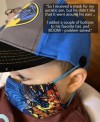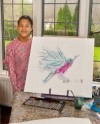Stickman Communication

Stickman Communications create brilliantly simple cards to help communicate a variety of conditions/ disabilities.
They currently cover;
* ASD
* Sensory overload
* Allergies
* Medical conditions
* Bowel and bladder conditions
* Hypermobility and EDS
* Migraine
* Seizures
* POTS /SVT
* Visual impairment
* Mental Health
*…
Full Size image








